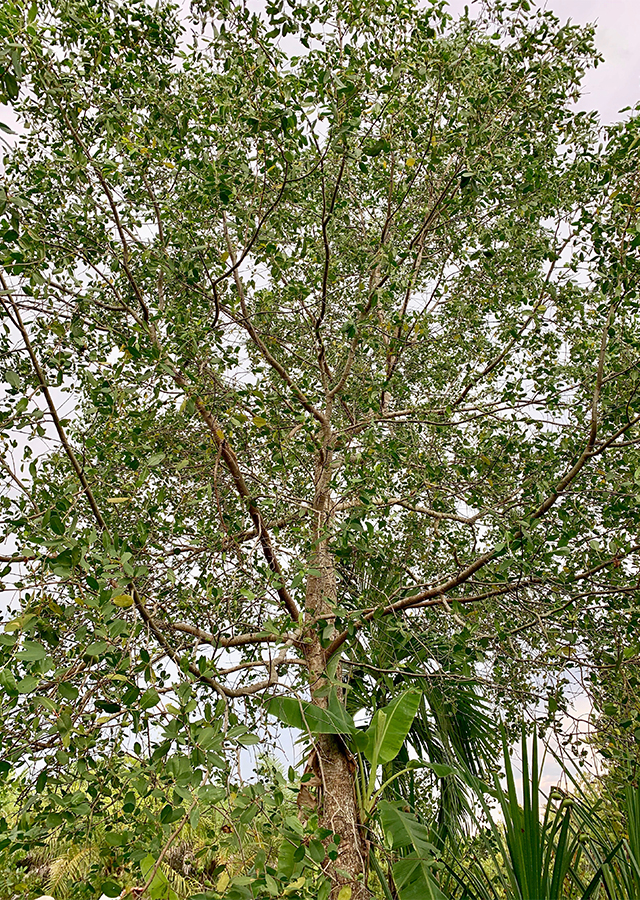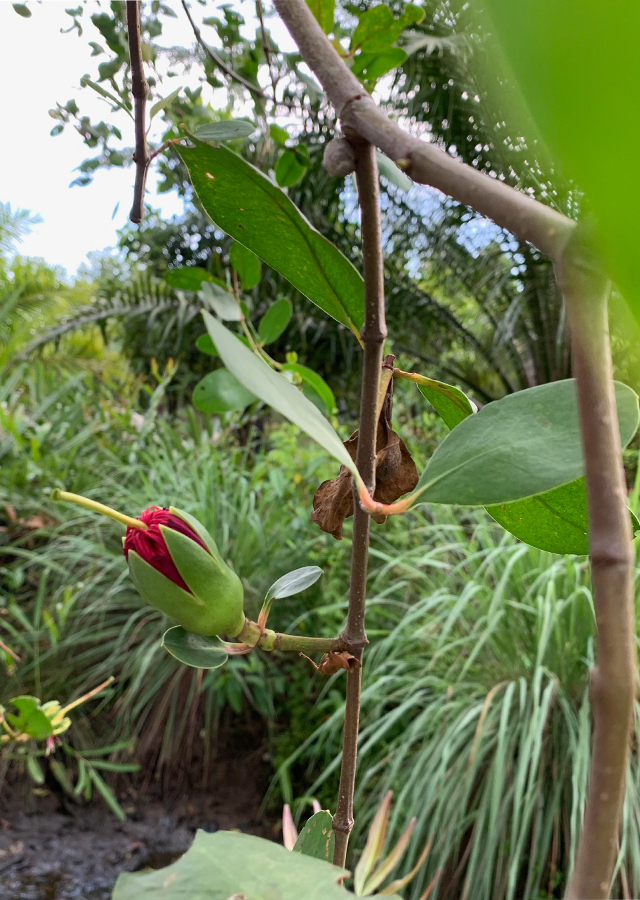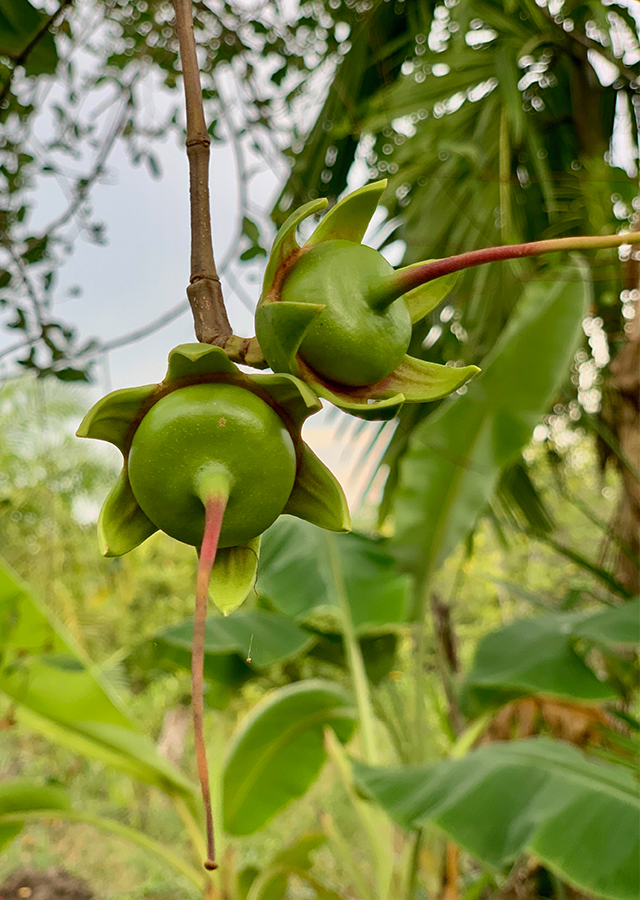Traditional Herbs from Sonneratia caseolaris
treating_wounds_and_bruises
- Prepare several mangrove apple leaves, wash them clean.
- crush finely, mix with salt to taste.
- Put it on the injured or bruised part.
mangrove_apple_syrup_for_body_resistance_
- Prepare 2 kg mangrove apples, 2 kg sugar, 2 \u2113 water
- Wash the apples and remove the petals, then squeeze with your hands until crushed. Add water and stir well.
- Strain and take the juice. Cook until it boils then add sugar, wait until the sugar dissolves and the syrup thickens, add food coloring (optional) and turn off the stove.
- Let the syrup room temperature then ready to be packaged.
What is Sonneratia caseolaris Looks like??



Parts of Sonneratia caseolaris that could be used
- Leaves
- Fruits
Sonneratia caseolaris Distribution
The distribution of mangrove apples is from East Africa to Australia, the Salomon Islands, Micronesi and New Caledonia. In Asia, it is found in Sri Lanka, Indonesia, Malaysia and the Philippines. It is often processed into dodol, diamonds, syrup, juice and even shampoo apart from being a traditional medicine.Agroecology of Sonneratia caseolaris
It grows in brackish areas in mangrove forests, in deep mud soil, along small rivers with slow flowing water and is influenced by tides. Shade intolerant. Temperature 20-30 °C, rainfall 1,500-2,500 mm/yr, pH 6.7-7.3.
Morphology of Sonneratia caseolaris
- The root of the breath is cone-shaped. The tips of the branches/twigs are drooping, rectangular when young.
- Single leaves are crossed, ovate to breech, 5-10 cm long.
- Flowers\u00a0are red, ephemeral, fully developed after 20.00 at night, contains a lot of nectar.
- Fruit diameter 6-8 cm, green color, smooth surface, stem tip, cup-shaped petals cover the base of the fruit, taste sour.
- Many seeds are flat.
Cultivation of Sonneratia caseolaris
- Reproduction by seeds and stem cuttings.
- Dispersal of seeds is aided by insects, bats and birds.
Sonneratia caseolaris, more details :
Chemical Content of Sonneratia caseolarisAlkaloids, terpenoids, steroids, phenolics (gallic acid, 2 luteolin flavonoids, luteolin 7-O-ß-glycoside), pectin, tannins, saponins, nyasol, maslinic acid.
Benefits of Sonneratia caseolaris
Haemostatic (stops bleeding), medicine for sprains, swelling, wounds and bruises, worms, coughs, smallpox, treats bloody urine, increases body resistance.
Simplisia of Sonneratia caseolaris
Another Facts for Sonneratia caseolaris :
Synonym of Sonneratia caseolarisAubletia caseolaris� (L.) Gaertn., Blatti caseolaris� (L.) Kuntze, Sonneratia acida� L.f.
Habitus of Sonneratia caseolaris
Tree. Perennial upright tree in mud areas, 16-20 m high
Habitat of Sonneratia caseolaris
- Wetland
No comments:
Post a Comment